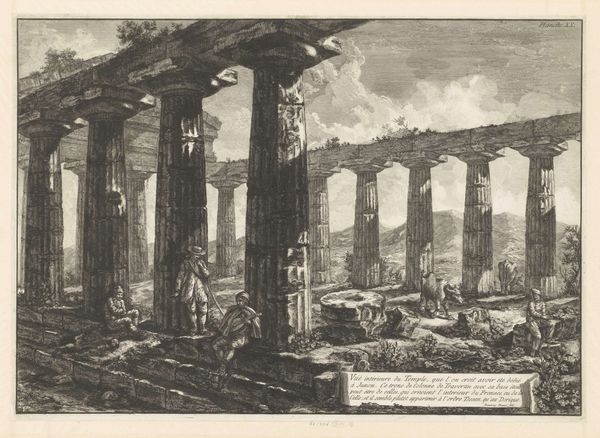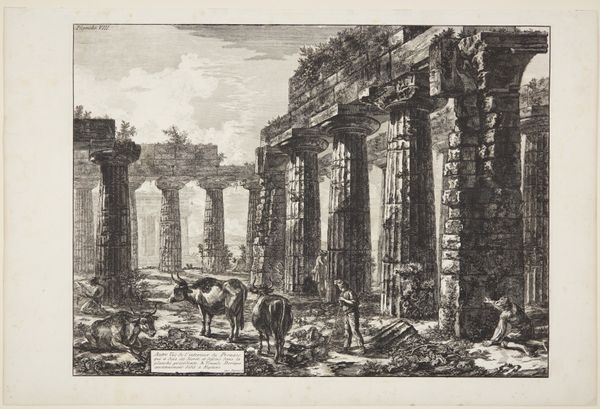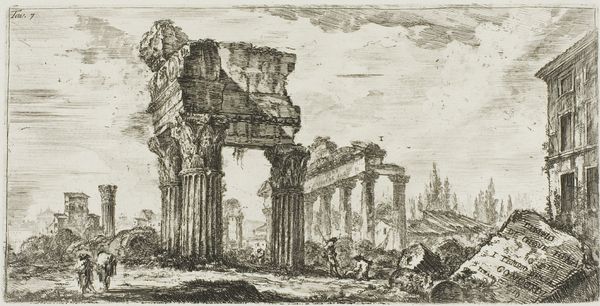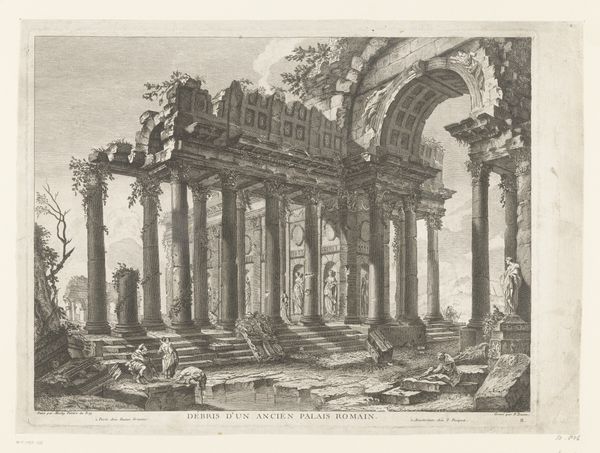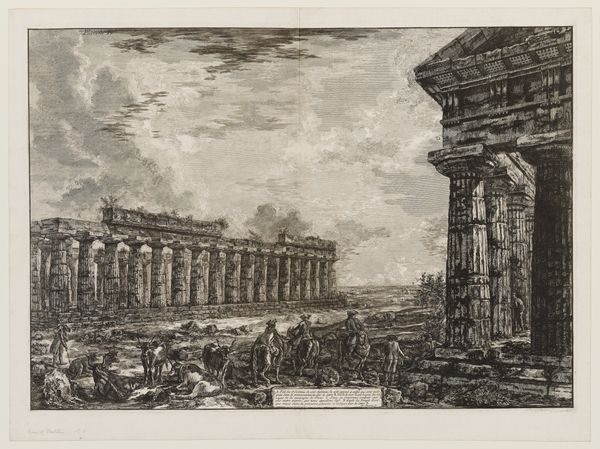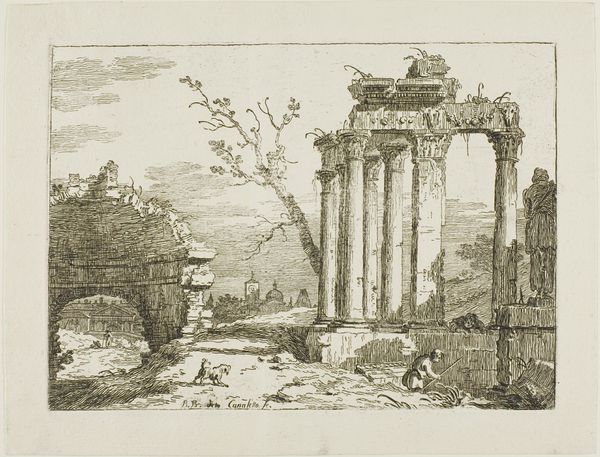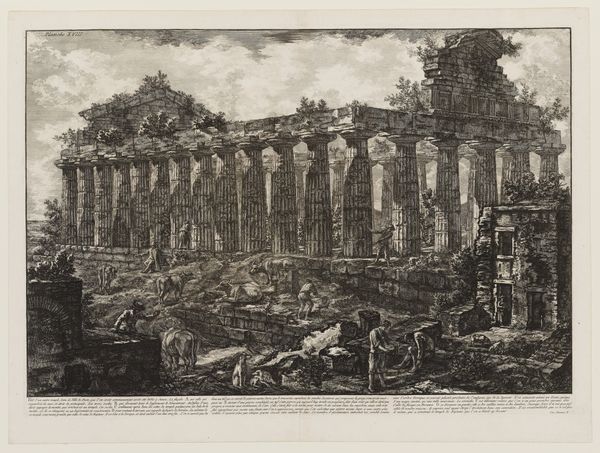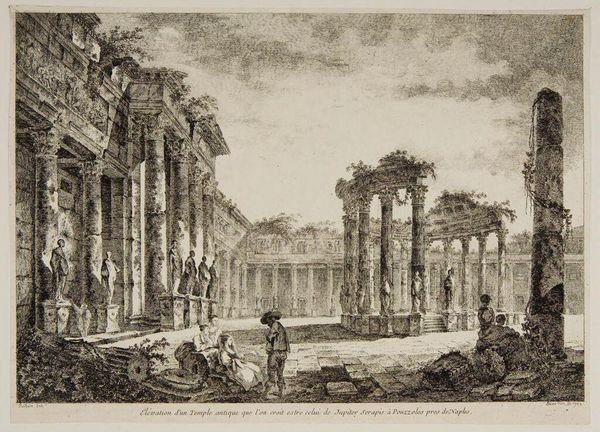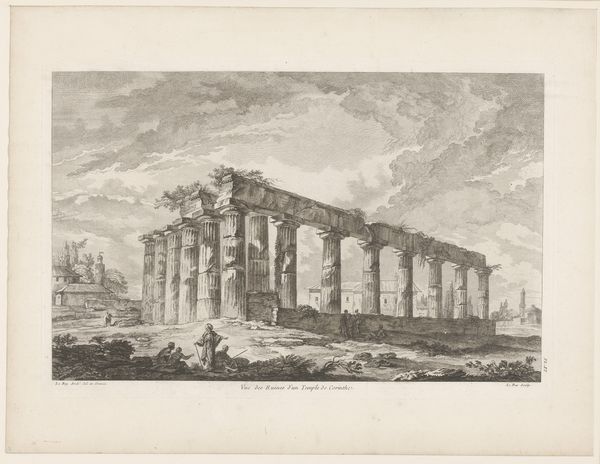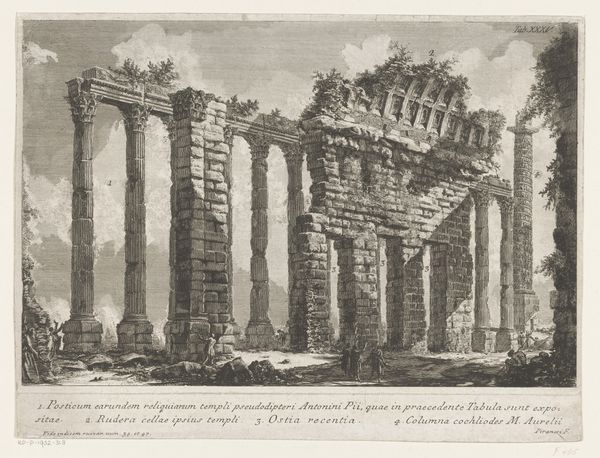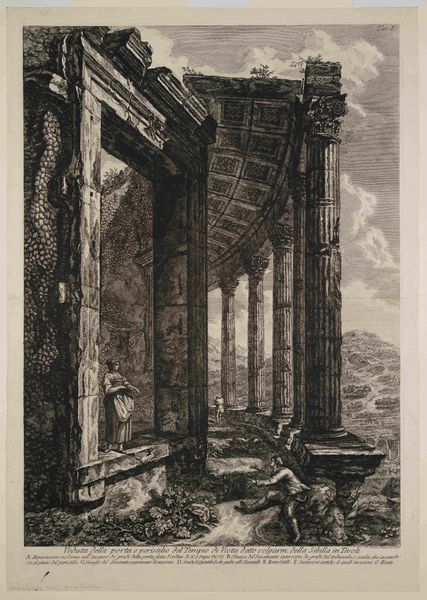
drawing, tempera, paper, fresco, ink, pencil, architecture
#
drawing
#
neoclacissism
#
tempera
#
pencil sketch
#
landscape
#
paper
#
fresco
#
ink
#
ancient-mediterranean
#
pencil
#
architecture
Dimensions: height 465 mm, width 675 mm
Copyright: Rijks Museum: Open Domain
This drawing of the Temple of ‘Juno’ at Paestum was made by Giovanni Battista Piranesi in the 18th century using pen and brown ink, with grey wash, on laid paper. Piranesi was interested in the materiality of the ancient world. The drawing emphasises the temple's imposing scale, solid form, and the palpable sense of history embedded within the stone. Look closely, and you will see how the ink and wash capture the rough, weathered surfaces of the temple, emphasizing the effects of time and the elements. His careful use of chiaroscuro creates dramatic contrasts between light and shadow, further enhancing the monumentality of the architecture. Piranesi was not just interested in the aesthetics, but in the labor involved in quarrying, transporting, and assembling the massive blocks of stone. The drawing itself would have involved a great deal of labor to create. By appreciating the art and architecture, Piranesi encouraged a wider understanding of the world, challenging traditional notions of art and craft.
Comments
rijksmuseum about 2 years ago
⋮
Piranesi is best known for his large prints of Rome and its surroundings, which were intended for sale to tourists. This drawing features a Greek temple in southern Italy. The composition was carefully thought out with a rhythmic succession of columns running diagonally across the picture plane. Emphasis was placed on light and dark effects and the irregular crumbling of the marble. Herders with cattle create a pastoral atmosphere.
Join the conversation
Join millions of artists and users on Artera today and experience the ultimate creative platform.
